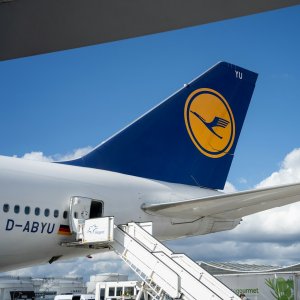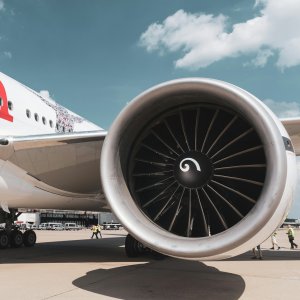
What Comes Next for the Aerospace Industry?
 By Sofía Hanna | Journalist and Industry Analyst -
Tue, 01/04/2022 - 15:37
By Sofía Hanna | Journalist and Industry Analyst -
Tue, 01/04/2022 - 15:37
Almost two years into the COVID-19 crisis, the aerospace and aviation industry continues struggling with the repercussions that the sanitary crisis brought along. Great efforts have been made within each branch of the industry to achieve pre-pandemic numbers. However, all forecasts point toward another three to four years for a full recovery. Sanitary restrictions, lack of passengers, limited trust in travel, governmental repercussions and the challenges that remain are just some examples of what the sector has had to face and what could still be on the cards for the near future.
Even though aviation is still plagued by hurdles, there has been a slow and almost steady recovery. During the first part of 2021, travel restrictions endured and became a latent concern for industry associations as they limited air connectivity, hurting the industry and putting jobs at risk, as mentioned by MBN. Even though restrictions were more and more strict, Mexico did not limit national or international travel. Local airlines were, in fact, being affected by the contraction in demand for international travel and the lack of interest in travel, even within Mexico. Airlines tried to find new ways to boost travelers’ confidence in flying without discriminating against travelers without vaccination, especially since countries like the US and Canada started having even more restrictions toward flights coming from Mexico, as there was no obligation of getting vaccinated while passengers presented fake proof of a negative viral test.
Midway through the year, the International Air Transport Association (IATA) applauded the growing number of countries making evidence-based decisions to open their borders to vaccinated travelers, even though Mexicans were still facing travel restrictions in many countries worldwide. In fact, the only country in the EU allowing Mexicans to enter without restrictions is Rumania, while Switzerland and Croatia have only partial restrictions for Mexicans. As restrictions eased, Mexican airports started seeing a gradual increase in passenger traffic. Mexico’s 61 commercial airports reported about 9.65 million passengers for domestic and international flights. This number was 28 percent lower than before the pandemic, when local airports reported 13.24 million passengers. However, this also reflects a 72 percent recovery and the sharpest increase in demand in domestic traffic thanks to connecting flights. Even though this increase was shaped to boost the Mexican industry’s recovery, IATA stated that Mexico’s international passenger traffic will not recover to its pre-pandemic levels until 2025.
Two months after this statement was made public, an OAG report stated that Mexico was only 9.6 percent away from fully recovering the domestic capacity it had before the pandemic. Most of this success was due to Viva Aerobus and Volaris that showed an increase in traffic and capacity. In June 2021, Viva Aerobus announced that it had exceeded its monthly passenger record for the second consecutive month, reaching 1.36 million registered passengers.
FEMIA estimates that by the end of 2021, the total income for the industry would increase by 6-10 percent, compared to 2020. “It is a small recovery that gives us confidence that we will take back our pre-pandemic numbers in 2024,” said René Espinosa, President, FEMIA. Mexican aviation also faced economic hurdles, however, as the Mexican Airspace Navigation Services (SENEAM) agency reported that Mexican airlines had an MX$732 million (US$36.2 million) debt regarding rights of airspace use. One of the airlines in question was Interjet, which faced trials, complaints and accusations all year. Later on, when Canada canceled flights to Mexico, a fall in several airlines’ stock market values ensued, making it seem as if the sector was facing the point of no return. However, cases like Viva Aerobus showed an opportunity for recovery given companies’ abilities to expand their business and airline capacity more and more through 2021.
Another success story came from Grupo Aeroportuario del Pacífico that invested MX$15.8 billion (US$790 million) in the renovation of its 12 Mexican airports to double its capacity by 2026. Despite the uncertainty we are facing because of the pandemic, the group keeps investing,” said Raul Revuelta, Director, Grupo GAP.
The Political Side of Things
Conflicting reports concerning the Santa Lucia airport continued to arise throughout 2021. A number of conflicting media reports surrounding the validity of the airport’s construction progress started to come up, while discrepancies arose as to how much had been invested so far in this project with a little over US$4 billion allocated to the project so far. The amount put into the airport caused great controversy given how other sectors of the country that had a bigger necessity during COVID-19 times were running low on funds. In general, the development of the airport was and continues to be controversial, beginning with the agrarian communities of San Miguel Xaltocan, that reiterated the legitimate nature of their claim to the land rights of over 128ha that are to be occupied by the airport. Regarding budget, critics point to the fact that the cost of the cancellation of NAIM is equivalent to four Saint Lucia airports. Finally, industry experts highlight that the airport is expected to reach its saturation point in five years. The redesign of air routes to incorporate Santa Lucia’s flights to Mexico’s airspace system also brought uncertainty because of the lack of environmental noise studies and a near accident involving two planes due to the lack of airspace coordination.
Because of these issues and potential concerns, the US Federal Aviation Administration (FAA) downgraded Mexico’s air safety rating. To this, president López Obrador responded saying that “all the rules are being met (...) We have been complying with all the requirements, we feel that this decision should not be carried out because we are up to date.” After the downgrade was made, the government created a dedicated body with the sole goal of determining and implementing the measures necessary to regain the lost classification. On June 4, the group announced it would develop concrete actions to recover its Category 1 rank, as the downgrade limits Mexican airlines from launching new routes, increasing route frequencies and adding more capacity, among other effects, which ended up affecting airlines like Viva Aerobus, which reported that the FAA had blocked two planned routes to the US.
FAMEX Finds New Home
The Santa Lucia military base was normally the host of the most expected aerospace event of the year: FAMEX. However, the construction of the Felipe Ángeles International Airport (AIFA) led organizers to look for a new host city. While several states were considered, Queretaro was chosen by FAMEX organizers as the state holds the main aerocluster in Mexico. Nevertheless, a month before the event, the Queretaro government suspended the latest edition of the Mexico Aerospace Fair (FAMEX) due to restrictions related to COVID-19, leading organizers to move the event back to Santa Lucia.
Forecast for 2022
The Latin American aviation industry is fully focusing on recovery and finally reaching its pre-pandemic levels. However, the spread of the new Omicron variant brings a new challenge that worries the aviation industry, as travel restrictions are not a long-term solution to control COVID-19 variants. Still, the relaxation of health measures on flights, safe tourism and booster shots against COVID-19 could lead to future improvements in the sector’s numbers.
















